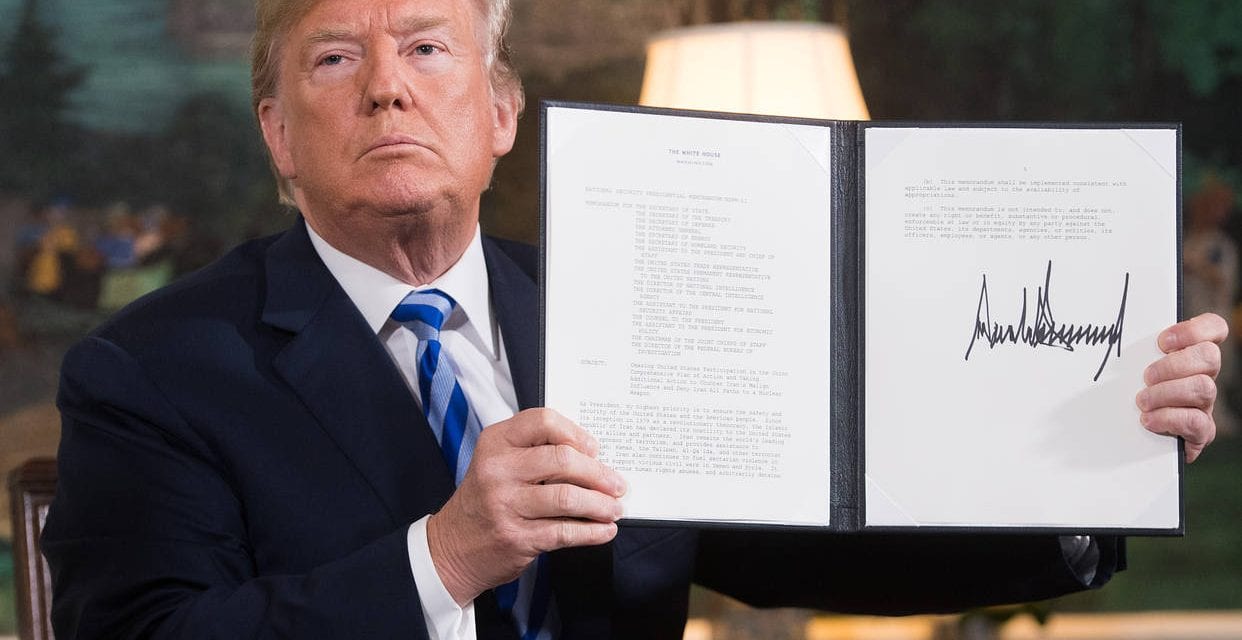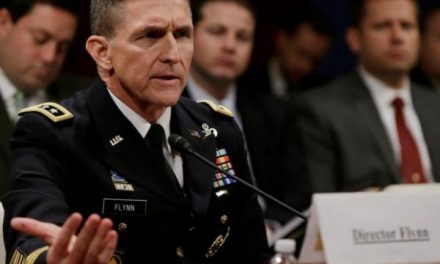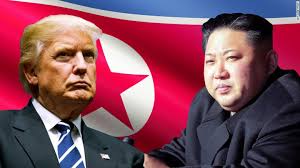What Trump might decide on the Iran Deal and what happens after.
By JARRETT BLANC, Carnegie
While it may feel inevitable that President Donald Trump will simply end the Iran deal on May 12, the actual range of possible outcomes is very wide.
WHY THE MAY 12 DEADLINE MATTERS
The JCPOA (Joint Comprehensive Plan of Action, also known as the Iran deal) is a political agreement, not a treaty. It does not have any formal provisions or procedures for withdrawal. A participant in the deal may simply cease complying with its obligations and accept the risk that other participants will do the same.
U.S. adherence to the deal is complicated. After Iran fulfilled all its nuclear commitments, the United States modified a number of executive orders, removed a number of entities from sanctions designation lists, issued a number of licenses and policy statements, and waived sanctions under four laws. These waivers need to be renewed every 120 or 180 days. One waiver is due for renewal on May 12—a threat to sanction third countries if they do not reduce purchases of Iranian oil. The U.S. secretary of state formally issues this waiver, but of course the president will make the ultimate decision.
The other three waivers are not due for another sixty days, though they can be withdrawn at any time.
The president last allowed the secretary of state to extend required sanctions waivers in January, but he issued an ultimatum to the United States’ European partners, threatening that he would not agree to extend the waivers again unless they agreed to address his concerns with the deal and other aspects of Iran policy.
POTENTIAL U.S. DECISIONS ON MAY 12
Outcome one is the administration successfully concludes its negotiations with the UK, France, Germany, and the EU, reaching an allied consensus on Iran policy and preserving the JCPOA. Since January, senior diplomats have met every few weeks to try to find common ground, and they have largely succeeded.
The administration is demanding that Europe agree in advance that there will be a forceful and coordinated reaction, including powerful new sanctions, if Iran crosses one of three hypothetical lines. Reportedly, the United States and Europe have largely reached agreement on how to respond if Iran develops intercontinental ballistic missiles (ICBMs) or if it denies access to the International Atomic Energy Agency (IAEA).
More work remains on the issue of “sunsets” in the JCPOA. Some of Iran’s commitments under the JCPOA are in perpetuity, while other restrictions begin to loosen in about eight years. The administration wants Europe to threaten the reimposition of JCPOA sanctions if Iran takes advantage of any loosened restriction; the Europeans correctly consider the U.S. stance to be a violation of the JCPOA and poor policy, since it would fail to prioritize different aspects of Iran’s potential future nuclear activity. Nonetheless, Europe and the United States have always shared a common perspective that if Iran again takes steps that do not fit into its civil nuclear program, it would require a strong and coordinated response. There is a clear middle ground between these two positions, and progress has been made in negotiations to reach it.
The European partners have also offered additional sanctions designations to address other Iranian policies of concern, including Iran’s support for regional proxies and terrorist groups, its non-ICBM ballistic missile programs , and its domestic human rights problems. Europe will not go as far as the United States would like—for example, the EU will not designate the political wing of Hezbollah for sanctions. Even to achieve their more modest proposals, the UK, France, and Germany will need support from the other EU member states, and this will be very difficult to achieve unless the United States commits to consistent implementation of its JCPOA obligations.
Finally, more work is needed to specify what the United States will do to assuage European concerns and signal its commitment to more stable and reliable adherence to the JCPOA. There is no benefit to resolving the issues described above if the president plans to threaten to withdraw from the deal every few months. There are a number of ways for the United States to send this signal, but there appears to have been less progress toward a consensus position on this topic than on the others.
The United States and its European partners do not need the other JCPOA participants—Iran, Russia, and China—to reach agreement on any of these points. So long as Iran does not change its current approach and neither develops ICBMs nor denies IAEA access, there will be no issue for at least eight years. If the JCPOA settles into a more stable rhythm, it is possible to imagine returning to Iran and seeking a negotiated settlement to international concerns on ballistic missiles, long-term nuclear issues, and other problems.
In other words, the United States, UK, France, and Germany have already reached agreement on a number of the issues, and they have made progress on others.
Outcome two is the administration punts—pointing to the progress Trump made in meetings with French President Emmanuel Macron and German Chancellor Angela Merkel—and agrees to extend the required sanctions waiver to allow time to conclude the negotiations. The next deadline could be as little as sixty days away, when three other sanctions waivers are due to be extended.
This option has bureaucratic appeal in the United States since it would allow newly sworn-in Secretary of State Mike Pompeo to own the issue, winning credit if he can broker a deal with the Europeans or taking responsibility for the future of Iran policy if a deal falls through.
Under normal circumstances, there would be no doubt about the outcome from this point: the United States and its closest allies would find a way to reach an agreement, either before May 12 or after another punt. The West’s strength on the world stage is built, in no small part, on this ability to accommodate each country’s concerns and work together. It is a measure of how much Trump has disrupted the United States’ normal partnerships that these two possibilities now feel like the least likely outcomes. This situation is dangerous and unusual and could disrupt U.S. alliances with its most important partners.
Outcome three is the administration seeks to split the difference between continued compliance and killing the deal. Pompeo could fail to extend the one sanctions waiver due on May 12 but make clear that the administration will need six months before any actual sanctions are enforced. The administration could claim that this six-month window allows for continued negotiations to save the JCPOA, though it is hard to know if private sector actors, the Europeans, or Iran would consider this to be a credible and good faith argument from the Trump administration.
Outcome four is the administration simply tries to kill the deal without further pretense. Even this, though, could be implemented in a wide range of ways. The United States issued forty-two pages of guidance to outline the steps it took in 2016 to meet its obligations under the JCPOA. The Trump administration could reverse all of these steps or only some of them. It could seek further ways to pressure Iran or be satisfied with failing in its JCPOA commitments. Winding down provisions for businesses complying with resumed sanctions could be more or less generous. U.S. enforcement could be vigorous or lax. It does not appear that the administration has a clear plan in place—in part because the president’s policy aim appears to be based on campaign rhetoric versus any clear views on national interest. In very broad terms, it is not clear whether he would be trying to maximize economic pressure on Iran or withdrawing from the JCPOA as a public relations maneuver while leaving enough of its benefits in place to incentivize Iran to maintain compliance with some or all nuclear restrictions or inspection requirements.
Neither of these objectives makes much sense. Even maximal U.S. pressure will be less effective than the economic pressure on Iran prior to the JCPOA, because it is clear that the United States will not have the same active support from as wide a range of partners as last time—everyone from traditional allies in Europe and Asia to occasional adversaries like China and Russia. Without strategic guidance from the president, the administration cannot even plan for which implausible outcome it will fail to achieve.
If no plan is in place now, it is unlikely that the administration can pull one together by Saturday, so at a minimum, the new U.S. approach is likely to be piecemeal and haphazard over the next several weeks.
WHAT WILL EVERYONE ELSE DO
Iran
The most important decisions will be made in Tehran. There will be enormous domestic political pressure to respond to any U.S. violation in kind. Any Iranian violation of the JCPOA, though—even a relatively modest one—will likely fuel the deal’s collapse. The international community will not be as united as it was in 2012: China, Russia, India, and others are likely to be more accommodating to an Iran perceived as wronged by the United States. Europe will likely side with the United States even if it blames the administration for the deal’s collapse, meaning that many of the advantages of political and economic integration Iran hoped to achieve with the JCPOA will be out of reach. Everyone will be back in the trenches, staring across at each other with mistrust and suspicion.
Europe
If Iran musters the domestic political discipline to stay in compliance with its JCPOA obligations despite U.S. noncompliance, Europe will face some very difficult decisions. European leaders reiterated again this week that they will stick with the deal, but that position implies a lot of possible next steps. European governments could seek to negotiate a JCPOA without the United States, offering Iran new concessions in order to preserve at least the core of the nuclear restrictions and inspection requirements in the deal. The vast majority of the sanctions concessions agreed by the United States are secondary sanctions—meaning threats to target firms in third countries if they do business with Iran. Few of the U.S. concessions related to the primary embargo, or the broad prohibition on U.S. entities doing business with Iran. That means that Europe can seek to ease any resumed U.S. sanctions with other forms of economic and business inducements, but only at the cost of taking an unusually confrontational approach in transatlantic relations.
Other Iranian Business Partners
Iran’s other key trading partners—China, Japan, South Korea, India, Turkey, and Russia—will each need to decide whether to accommodate the demands contained in new U.S. sanctions, to quietly elide those sanctions and continue commerce, or to make a bold effort to take advantage of new commercial opportunities in Iran.



















